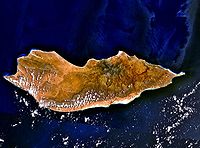
Photo from wikipedia
Abstract The conflicts between wildlife and aircraft have increased due to the development of the aviation industry. While many studies have quantified the relative hazards of wildlife to aircraft, few… Click to show full abstract
Abstract The conflicts between wildlife and aircraft have increased due to the development of the aviation industry. While many studies have quantified the relative hazards of wildlife to aircraft, few studies have combined DNA barcoding techniques with field surveys of bird communities in different habitats to reveal the exact species involved in bird strikes and how the habitat heterogeneity around airports affects bird communities and even the occurrence of bird strikes. Taking Nanjing Lukou International Airport in China as an example, based on the DNA barcoding technology and detailed field research, we establish the most commonly struck species, which can help managers identify the level of hazard and lead to meaningful reductions in hazards and costs associated with bird strike. The investigation of bird communities showed that there were 149 bird species recorded within an 8 km radius. There were 89, 88, 61, and 88 species in the woodland, wetland, farmland, and urban area, respectively. In total, 303 samples identified 82 species representing 13 orders and 32 family of birds from bird strike cases, of which 24 species were not found in the field survey. Passeriformes were the most common order of birds identified, with 43 species represented in 167 identifications. Skylark, Thrush, Shrike, Lapwing, and Swallow were most likely to cause damage or substantial damage to aircraft when strikes occurred. In addition to birds, we identified 69 bats individuals (accounting for 22.77%) using DNA barcoding. The Bray–Curtis similarity analysis revealed that species involved in bird strike had the highest similarity with urban area. Our findings suggest that policymakers should pay more attention to managing the wetlands and urban areas surrounding the airport. These findings imply that DNA barcoding can add to the environmental monitoring in airports, which can facilitate hazard management and improve air safety.
Journal Title: Ecology and Evolution
Year Published: 2023
Link to full text (if available)
Share on Social Media: Sign Up to like & get
recommendations!